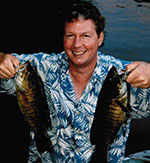For the Inuit of Nunavut’s Arctic Archipelago, narwhal and bowhead whales are traditional food sources, hunted annually as they migrate past local communities. If the practice, with its benefits to local health and well-being is to continue, however, setting sustainable harvest quotas is crucial and depends on accurate population estimates — a job that falls to Fisheries and Oceans Canada.
“We’ve typically gone to a community and done an aerial survey of the waters near that community,” says research scientist Kevin Hedges of FOC’s Arctic Aquatic Research Division. “What we’d end up with are all these tiny snapshots that we’d have to try to piece together, and because marine mammals are highly migratory, you never knew for certain if you were surveying the same animals twice, or different populations.”
To address the issue, FOC incorporated Inuit knowledge in its research design and conducted a single, month-long survey of Nunavut’s entire Arctic Archipelago for the first time last summer. Based out of Resolute Bay and led by Hedges, the High Arctic Cetacean Study had an innovative combination of personnel onboard its three Twin Otters: scientifically trained marine mammal observers, and Inuit hunters — seasoned experts on sea mammal behaviour — to count narwhal and bowhead populations, as well as beluga, orca and seals.
While the data is still being processed — including analysis of some 120,000 aerial photographs — the study has already revealed some unexpected patterns. “The observers were surprised by the number of large groups of narwhal versus small groups,” says Hedges. “We also saw killer whales a little farther north than we had seen in the past, but this is part of an ongoing trend, presumably due to warmer ocean temperatures.”
FOC will release the results, and harvest quota recommendations, in March 2015. This work is a great example of the collaboration of government scientists and Inuit experts — each with a different approach to knowledge — to build understanding of the environment and maintain a millennia-old tradition in the Arctic. Check out the Canadian Polar Commission’s new report on the State of Northern Knowledge, at polarcom.gc.ca.
This is the latest in a continuing blog series on polar issues and research presented by
Canadian Geographic in partnership with the Canadian Polar Commission. The polar blog will appear online every two weeks, and select blog posts will be featured in upcoming issues. For more information on the Canadian Polar Commission, visit
polarcom.gc.ca.







